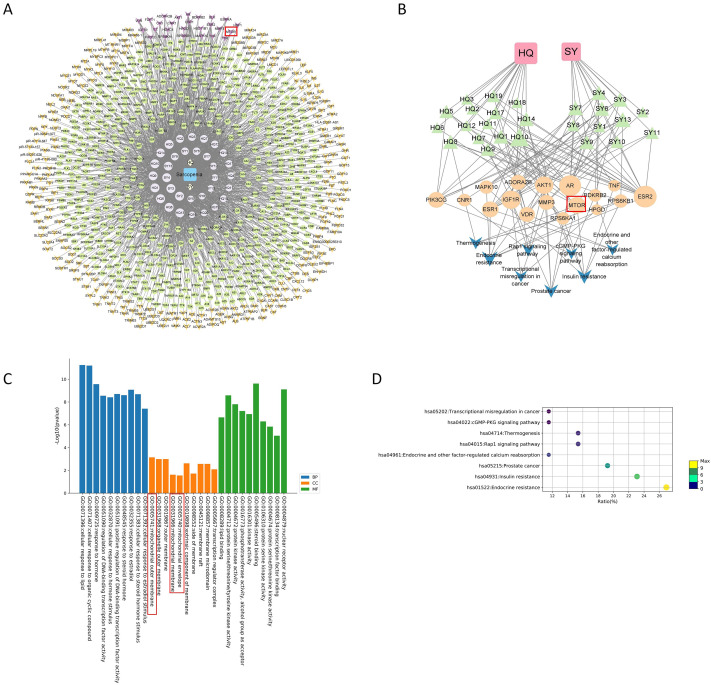
Sarcopenia treatment in senile type 2 diabetes mellitus
DESCRIPTION
Ethnopharmacological relevance
The combination of Astragulus embranaceus (Fisch.) Bge (Huangqi) and Dioscorea opposita Thunb (Shanyao) are one of the most widely accepted herb pairs in traditional Chinese medicine prescriptions for treating sarcopenia.
However, the mechanisms underlying the combination of these herbs for anti-sarcopenia treatment are not yet fully understood.
Aim of the study
To investigate the potential effect of the Astragulus embranaceus (Fisch.) Bge and Dioscorea opposita Thunb herb pair (Ast-Dio) on sarcopenia in mice that have been induced with senile type 2 diabetes mellitus, as well as to explore the underlying mechanisms related to the Rab5a/mTOR signaling pathway and mitochondrial quality control.
Materials and methods
Network pharmacology was utilized to identify the main active ingredients of Ast-Dio and potential therapeutic targets for sarcopenia. Gene Ontology function and Kyoto Encyclopedia of Genes and Genomes pathway enrichment analyses were conducted to explore the underlying mechanisms of Ast-Dio in treating sarcopenia.
The high-performance liquid chromatography method coupled with triple-quadrupole tandem mass spectrometry was developed to quantify the major constituents of Ast-Dio. Male C57/BL6 mice, aged 12 months, induced with type 2 diabetes mellitus via streptozotocin were divided into three groups for 8 weeks: the model group, Ast-Dio treatment group (7.8 g/kg), and metformin treatment group (100 mg/kg).
Normal control groups included mice aged 3 and 12 months, respectively. The study monitored changes in fasting blood glucose levels, grip strength, and body weight during 8 weeks of intragastric administration. Liver and kidney function in mice was evaluated by measuring the levels of serum creatinine, alanine transaminase, and aspartate transaminase. Skeletal muscle mass condition was evaluated by muscle weight, and hematoxylin and eosin staining.
Protein and mRNA expressions related to muscle atrophy, mitochondrial quality control, and the Rab5a/mTOR signaling pathway were detected using immunofluorescence staining, immunohistochemical staining, Western blotting, and quantitative real-time polymerase chain reaction. In addition, transmission electron microscopy was employed to investigate the condition of mitochondria in the groups.
Results
Through the prediction analysis of network pharmacology, we identified mTOR as one of the primary targets for Ast-Dio therapy of sarcopenia. Gene Ontology functional enrichment analysis revealed that mitochondrial control quality is crucial in the treatment of sarcopenia with Ast-Dio. Our findings showed that senile type 2 diabetes mellitus induced muscle mass loss and a reduction in grip strength, both of which were dramatically restored by Ast-Dio treatment.
Notably, Ast-Dio increased Myogenin expression while decreasing Atrogin-1 and MuRF-1 expression. Additionally, Ast-Dio activated Rab5a/mTOR and its downstream effector AMPK. Moreover, Ast-Dio modulated mitochondrial quality control by decreasing Mitofusin-2 expression while increasing the expression of TFAM, PGC-1α, and MFF.
Conclusions
Our results suggest that Ast-Dio treatment may alleviate sarcopenia in mice with senile type 2 diabetes mellitus through its effects on the Rab5a/mTOR pathway and mitochondrial quality control.